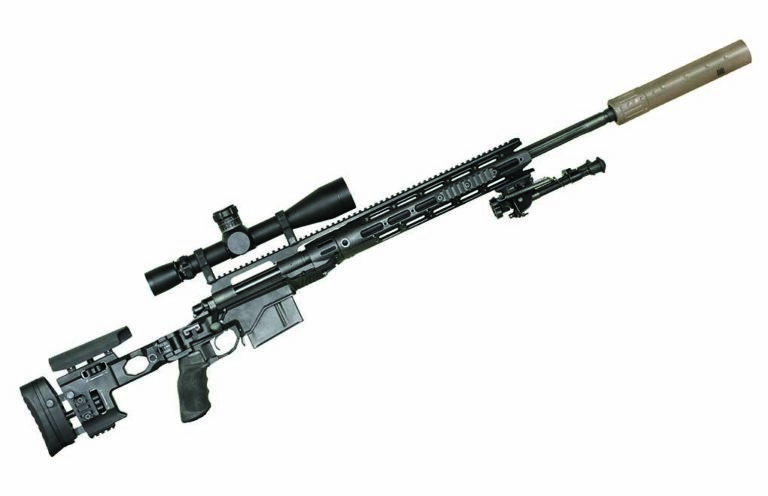

The American sniper rifle has taken many forms, but its objective has remained the same—one shot, one kill.
Select Primary American Sniper Rifles Used Throughout History:
- American Long Rifle (American Revolution)
- Sharps Rifle (Civil War)
- Whitworth Rifle (Civil War)
- M1903A1 (World War I)
- M1903A4 (World War II)
- M1941 (World War II)
- M1C (Korean War)
- Winchester Model 70 (Vietnam War)
- M21 (Vietnam War)
- M40 (Vietnam War)
- M24 (Modernday)
- M2010 (Modernday)
- M82 (Modernday)
The sniper rifle, engineered expressly for long-range shooting, singularly captures the American imagination. It’s little wonder why.
Aside from their incredible ballistic feats, the men who wielded these specialized tools exemplified the best traits of our soldiers. Be it the U.S. Marine Corps’ Carlos Hathcock, Navy SEAL Chris Kyle or any of the other countless long-range warriors, the American sniper proves diligent, courageous, skilled—and, above all, deadly.
That last point is especially true. Whereas infantry takes hundreds of thousands of rounds to record a kill, the sniper’s requirements have remained consistently low: an efficient 1.3 rounds at last count. That’s a testament to their training and tools. Neither one is a recent occurrence.
The Deerslayer Goes to War
Perhaps no single muzzleloader stirs the American imagination more than the American Long Rifle. Just the mention of what’s better known now as the “Kentucky Rifle” conjures up images of Colonists picking off Red Coats at distance.
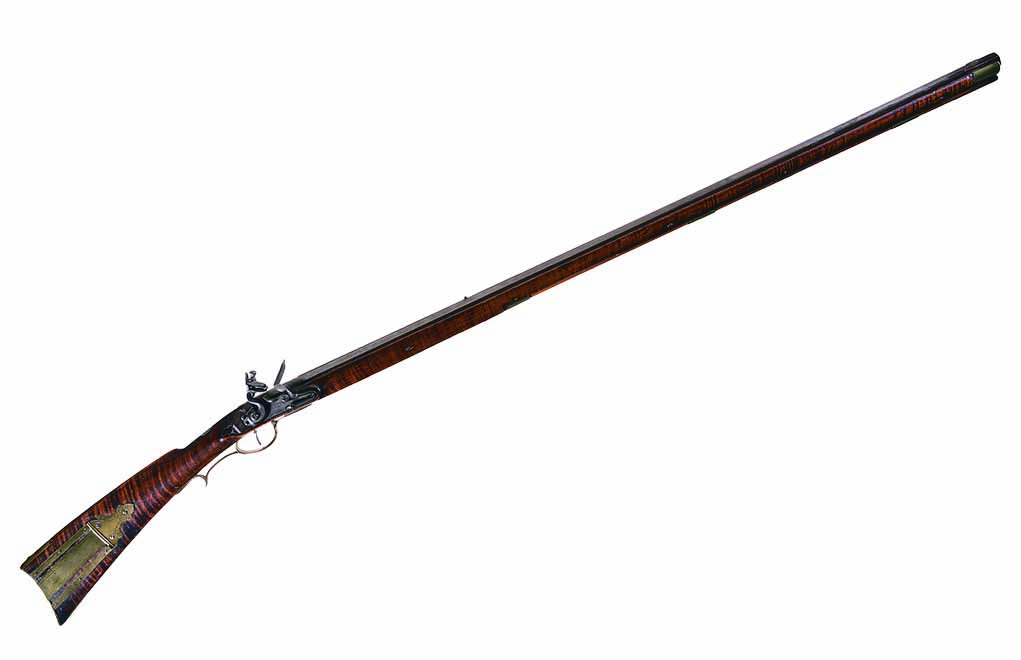
The accurate flintlock did play that role in America’s struggle for independence, perhaps most notably in the battles of Kings Mountain and Saratoga. The war even saw the first formalization of an American sniper unit (of sorts) by Daniel Morgan, aptly called “Morgan’s Riflemen.” But overall, its part was small compared to that of the musket. Typically, it was found in the hands of patriot militia or light infantry units.
Despite extending a soldier’s effective range past 200 yards—accurately, mind you—it has a couple of gaping holes that stymied wider adoption. Compared to muskets, the .40- to .50-caliber rifles were more difficult and time-consuming to load. The grooves could foul after several shots and would require cleaning to regain accuracy. In addition, they were incompatible with bayonets, forcing a rifleman to turn to his knife or tomahawk—undesirably so—upon an infantry charge. Nevertheless, the American Long Rifle did enough damage during the American Revolution to earn a place in the nation’s heart and mythology.
Surgical Precision in a Club Fight
Brutal. Few words better sum up the American Civil War. The advent of the conical Minié Ball in 1849 made the Springfield Model 1851, Pattern 1853 Enfield and other rifled muskets much more accurate. However, rank-and-file fighting was the order of the day, giving both the Blue and the Gray soldiers barn door-sized targets at which to pitch the devastatingly effective soft-lead projectiles.
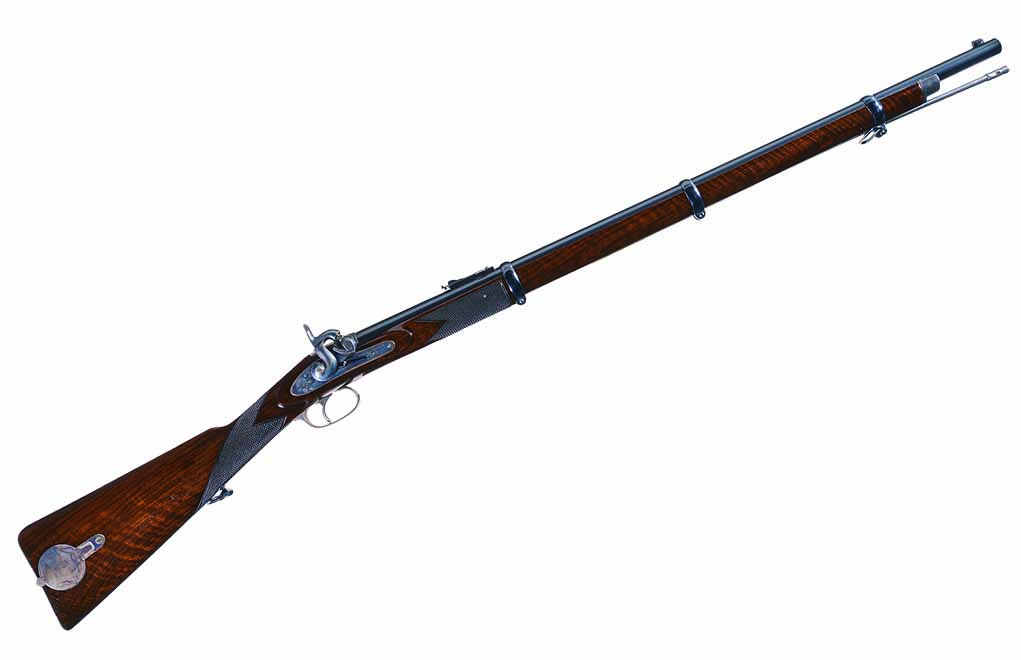
Despite the close and grizzly battles, sniper tactics were coming into their own. Both the Union and Confederate soldiers had sharpshooting regiments. Perhaps the most famed was Brigadier General Hiram Berdan’s (the name behind the primer) legendary U.S. Volunteer Sharpshooting Regiments and their Sharps Rifle.
Breechloading, set trigger, capable of delivering its deadly payload past 1,000 yards, the .52-caliber was among the most accurate rifles of its time—a terrifying instrument when you think about it. Remember, many battles were won by those best with the bayonet. A rifle that could knock you out of your brogans, sight unseen, is enough to send chills from leggings to kepi.
Berdan’s men used it to good effect, most notably at Gettysburg. Some even got outfitted with the breakthrough technology of the day—a telescopic sight. And, while its reputation precedes it, the Sharps might not have been the most feared sniper rifle in the War Between the States. That distinction goes to the Whitworth Rifle.
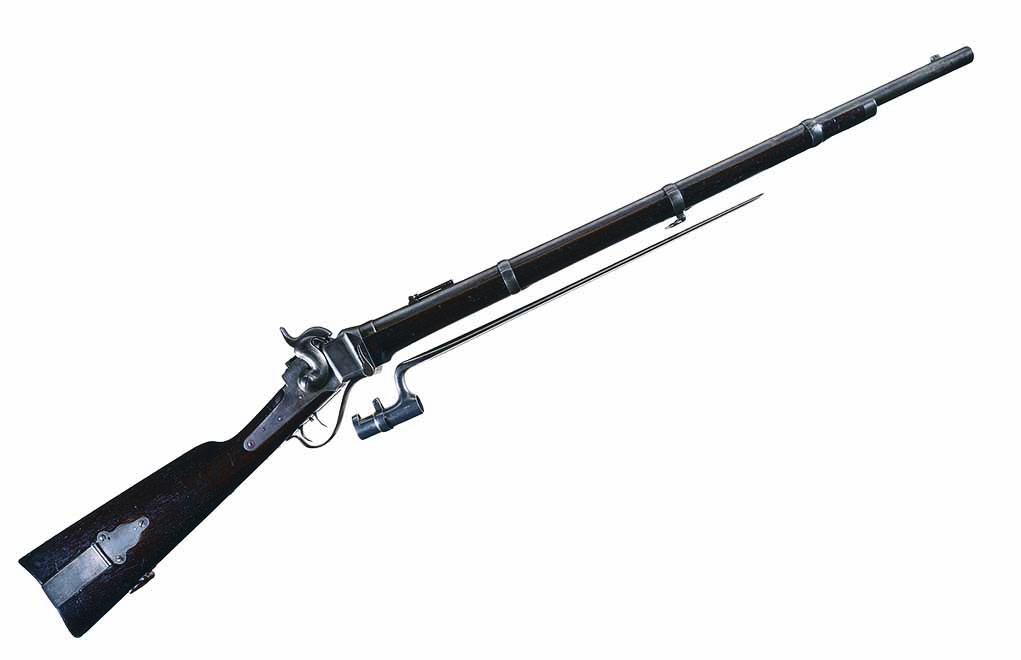
The unusual hexagonal bullets the hexagonally bored rifle shot were known to whistle in flight—a banshee’s shrill that often meant death. However, Union soldiers had good reason to fear the abstruse rifle for more than just the sound it produced: It was capable. One proficient Confederate sent a bullet screaming from his Whitworth in December 1864 at Fort Sumpter to record what was then the longest kill by an American soldier—1,390 yards. Amazingly, the mark stood until World War I and remains in the top 20 of the most lengthy sniper kills of all time.
Even so, the .451-caliber rifle wasn’t a miracle weapon. There weren’t enough to make an impact, and the ones on hand were painfully slow, shot to shot—a curse of most accurate muzzleloaders. Not that either made a difference to a soldier who had a Whitworth bullet whistling toward him.
International Conflict and Sniper Advancement
What we would recognize as a sniper rifle was forged in the crucible of two world wars. Yes, today’s highly engineered metal and synthetic rifles are lighter and more specialized than the Springfield M1903. But, like that old warhorse, modern sniper rifles pretty much remain bolt-actions, firing metallic cartridges, loaded with spitzer bullets and, most importantly, topped off with scopes.
More Sniper Rifles:
- The Best Sniper Rifle Options Today
- The Barrett M82
- The SVD Dragunov
- The M24
- The McMillan TAC-50
The Springfield’s role as the long-range backbone through both wars was default. Similar to most nations after World War I, the United States dismantled its sniper program and did not advance its weaponry by entering its sequel. Consequently, the evolution of the sniper system over this period is mainly defined by optics.
The .30-06 wore two primary scopes in World War I: the Warner & Swasey 1908 (or 1913 Telescopic Musket Sight) and the Winchester A5 Scope. The 5x A5 was the more desirable of the two. But, as is often the case in war, the lesser option was the more prevalent.
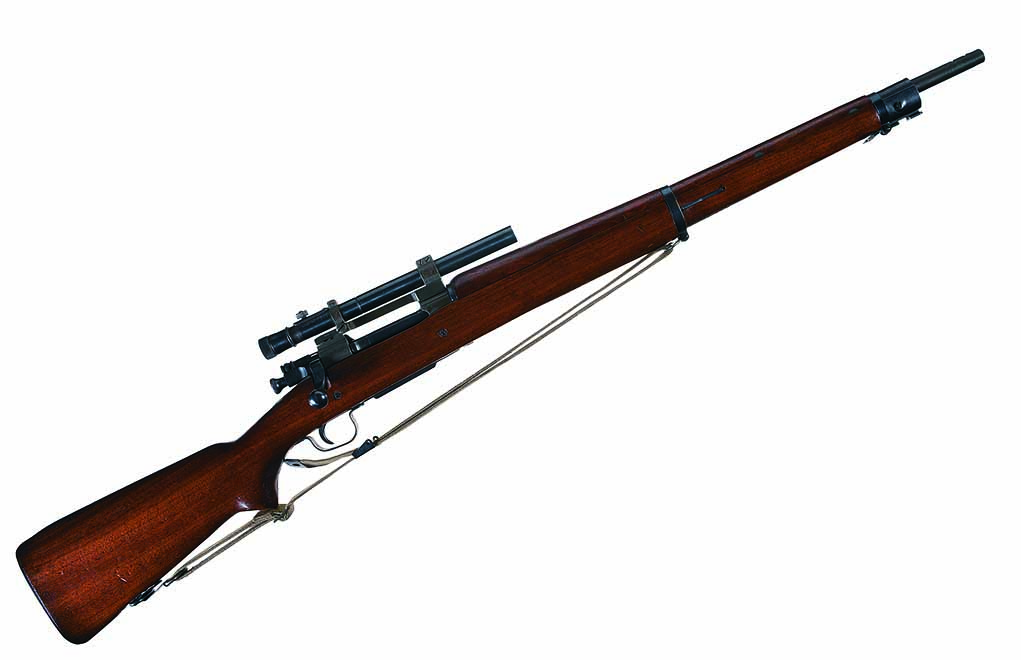
Warner & Swasey’s Musket Sight was the official U.S. Army scope. By all accounts, it was a dog. In addition to weighing upward of 2 pounds, the prismatic scope was offset from the barrel. Nevertheless, both the ’08 and ’13 models could take a licking. Neither was especially powerful. The 1908 was a more respectable 6x scope but was reduced to 5.2x by 1913 to open the field of view. In either case, the magnification was more than enough for trench warfare. “No man’s land”—the space between opposing trenches—rarely exceeded 300 yards.
The opposite of the Warner & Swasey, Winchester’s scope was top of the line. Mercifully, it also followed the fundamentals of scope operation; chief among these was that it was centrally mounted and turret-adjusted … only, the damned thing was like fighting with a Fabergé egg! The rifle’s recoil, alone, was enough to decimate it, leading to free-float mounting. This meant the eye relief had to be reset after every shot. Still, it was an upgrade for doughboys lucky enough to be issued one.
World War II’s mass production saw the advent of America’s first assembly line sniper rifle—the M1903A4. Not much differentiated it from other Springfields, except that the iron sights were left off to make room for the scope—in this case, the Weaver 340C (the “M73B1,” in Army parlance).
The glass was good and durable, but it wasn’t powered to pick fleas off a dog’s back. At 2.5x magnification, it was, at best, more of a mid-range option. This, combined with the United States having to reboot its sniper program, is perhaps the reason the Yanks struggled early on with their much-more-experienced German counterparts.

The same can’t quite be said for those in the Pacific Theater. Marine snipers generally had better luck, although they arguably had a system more suited to their application. The rifles were older (the vintage World War I M1903A1), but the scopes were much more appropriate (the Unertl 8x).
What became known as the M1941 Marine Corps Pattern Rifle was a sniper’s sniper system. As they do today, Marines had to know their DOPE and dial in each shot. However, the Unertl made it easy. The scope had oversized turrets, with both tactile and audible clicks. You could get on target, even in the thick of battle. So, what if the free-float mounts meant you had to reset the eye relief after every trigger pull? You had the confidence you’d hit what you aimed at. In the hands of skilled snipers, that was enough.
Semi-automatic snipers rifles—at least in concept—also came about in World War II. However, it would have to wait until Korea to get put to the test.
Crosshairs on East Asia
The contributions of the M1C in the Korean War weren’t child’s play. The semi-auto M1 Garand, modified to accept the M73 scope made by Lyman, was impressive … although it was hampered and overshadowed.
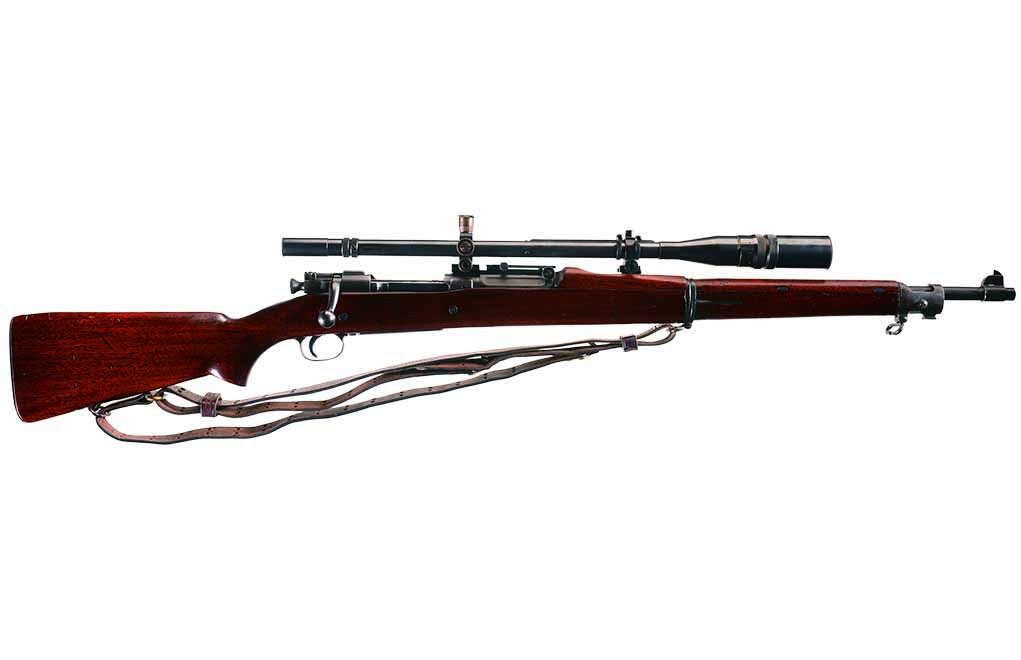
The rifle perhaps didn’t live up to its full potential, typically used 600 yards in, due to the lack of match-grade ammunition. Most simply pitched the somewhat-less-accurate Army-issued M2 ball.
Then, there was the style of battle waged on the Asian peninsula: A big war in a little country, the slaughter was primarily wrought from machine guns, wave frontal assaults and artillery barrages. Despite this, skunk-working snipers came up with some clever systematic advances in Korea.
None was more notorious than Army Major William Brophy’s .50-caliber monstrosity. Essentially, it was a Russian anti-tank rifle with an M2 machine gun barrel slapped on it. Of course, a bipod was necessary—and, for safe measure, a butt pad. For the finishing touch, Brophy crowned it with a 20x Unertl. Real “Frankenstein’s lab” stuff—but effective.

Brophy and others were able to make communists “good communists” from 2,000 yards out. More importantly, the first .50-caliber sniper rifle inspired an entirely new concept of what discipline might be. However, we’ll get to that shortly. We still have one more stop in Asia—a tough slog during which the sniper truly came into his own: Vietnam.
Tactically, his role made sense. Small-unit actions lent themselves to a war defined by thick jungles, where finding an enemy to engage was half the battle. It was a hunt and required hunters—such as Carlos Hathcock. An accomplished competitive shooter for the Marine Corps, winning the 1965 Wimbledon Cup at Camp Perry, his marksmanship was unimpeachable. So was his fieldcraft. There’s much written about Hathcock and the patience he showed in the face of hell for a single trigger pull.
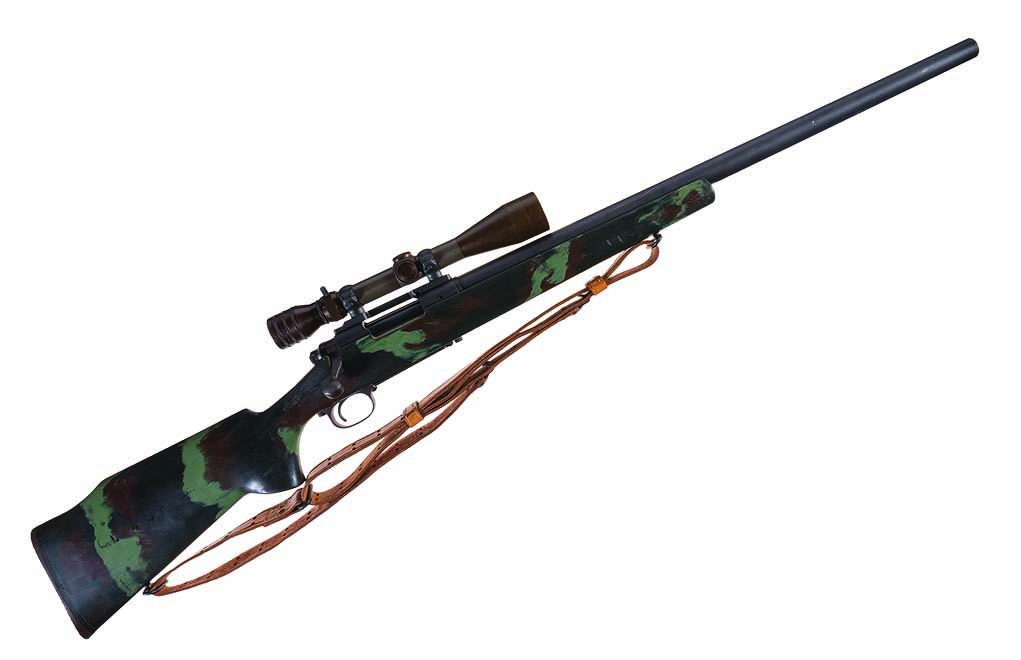
For the most part, that squeeze for Hathcock and other scout snipers came from behind a heavy-barreled Winchester Model 70. Typically, these were reconditioned Marine Corps match rifles … which might seem a small factor. It isn’t. Why? Simple: The good, old 70 wasn’t a service rifle; it wasn’t even close.
If anything, this showed that the U.S. military was beginning to recognize the particular role the sniper played on the battlefield. He was a specialized warrior who needed a specialized tool. He got it with the protean Remington 700.
Coming of Age
Up to this point, a lot of the sniper rifle discussion has revolved around optics. Make no mistake: In talking M40, M24 and other 700 military variants, this is still an important factor. But it’s not the only one.
From buttstock to muzzle crown, these rifles were specifically tuned for their job. Barrel, trigger, ammunition—nothing was left to chance. Even so, the most obvious development was the stock. Soon after the M40, it was no longer a one-size-fits-all hunk of walnut.
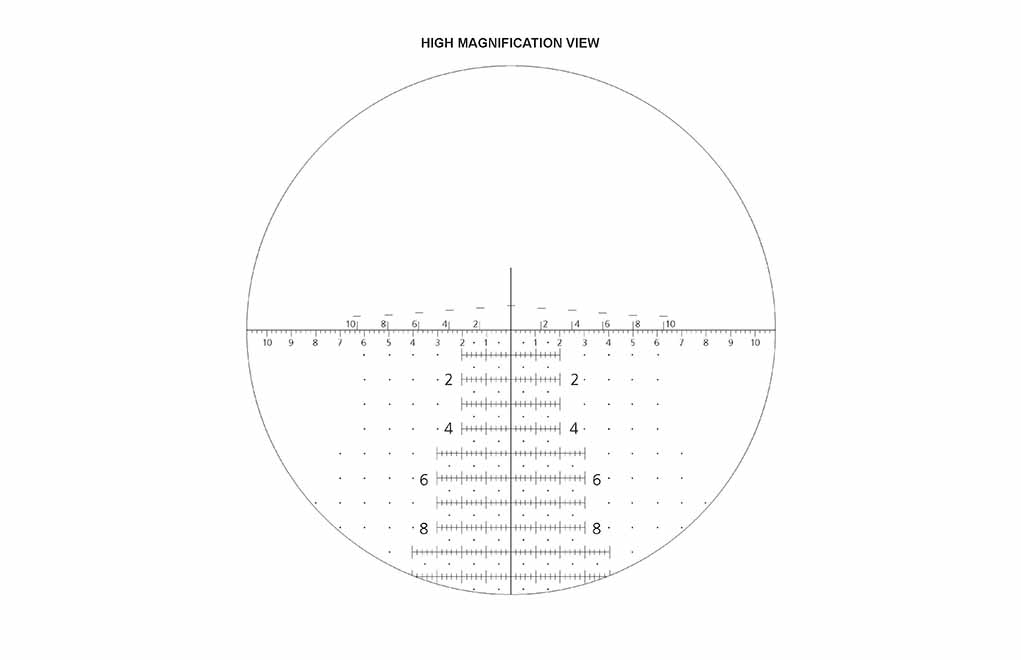
For example, take the Army’s most recent 700 variation, the M2010 Enhanced Sniper Rifle. Little surprise—it wears a chassis. Complete with thumbwheel length of pull and comb rise adjustments, snipers get the same consistent fit that match shooters seek. They should; their target is more vital than a bull’s-eye.
However, the M2010 wasn’t the first to latch onto these concepts. As early as the 1970s, Marine armorers upgraded the M40 with a fiberglass McMillan A1 stock, along with other modifications, creating the M40A1. The stock wasn’t adjustable, but it took inaccuracies due to stock swell all but out of the equation.
And, along with configuration, optics and caliber have also improved the modern sniper system. The M2010 is topped with a Leupold Mark 4 6.5–20x50mm ER/T M5A2 Front Focal variable power for most daylight operations. Aside from more and variable power, the scope uses a Horus H58 grid reticle, giving snipers the ability to hold over, lead shots and deal as never before.
As far as caliber is concerned, the trend has been larger and magnum. True enough, the 7.62 has been the mainstay since right after mid-century. But the .300 Win. Mag. (for which the M2010 is chambered) and .338 Lapua Magnum have become more accepted, just as snipers have become expected to hit longer and harder. Still, even those cartridges are small fries compared to what else presently resides in the sniper’s toolbox.
Not Just Overwatch
Radar arrays are expensive, vital and difficult to replace. It takes serious man-hours to fix a jet engine or delicate communications equipment. It would certainly be a shame if someone went ahead and poked a hole in one. Grasp this, and you grasp the concept of hard target interdiction: Sow chaos through material deprivation. Not that you couldn’t with the tried-and-true 7.62, but something with a little more “oomph” would get the job done with a little more gusto … say, a .50-caliber. Brophy and Hathcock both proved that the .50 BMG is an adequate long-range precision cartridge. Nevertheless, for all but a masochist, their versions aren’t really small-unit mobile.
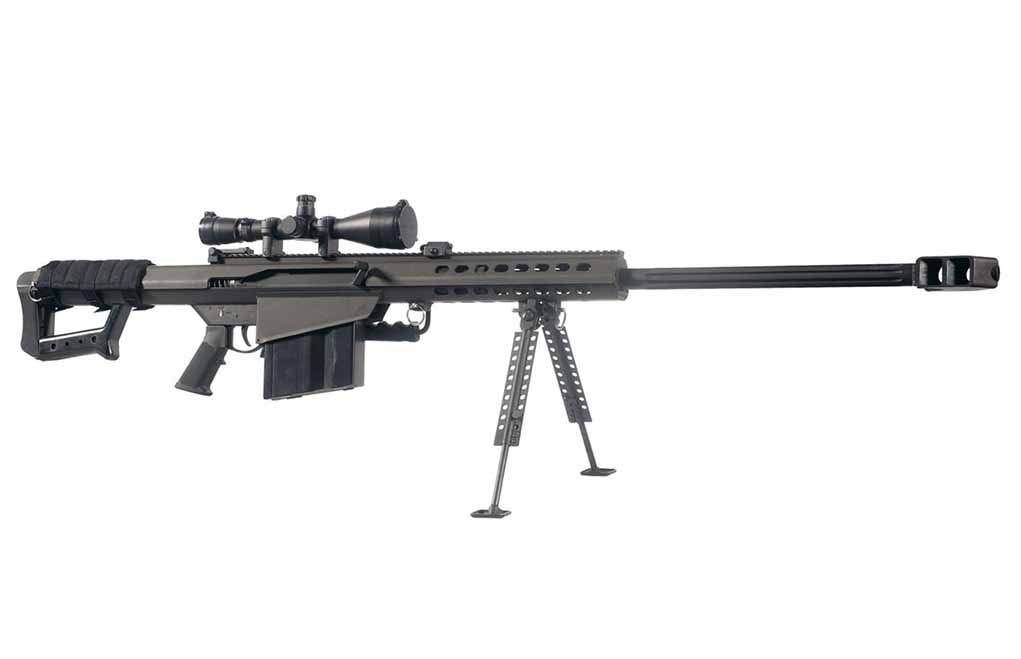
Enter the Barrett M82. A beast among precision rifles, this semi-automatic .50-caliber has an effective range of 1,900 yards. If manning a shoulder-fired .50 sounds about as coveted a position as a crash-test dummy, it should be. Yet, with the Barrett, it isn’t. In part, this is thanks to its weight—a whopping 27 pounds—and a recoil-absorbing barrel assembly. Topped with a 4.5–14×50 Leupold Mark 4, the M82 has dealt its fair share of far-out damage.
In 2004, Sergeant Brian Kremer of the U.S. 2nd Ranger Battalion let loose with his Barrett on an Iraqi insurgent and connected from 2,515 yards out. To save pen and paper calculations, this longest U.S. sniper kill to date came in at just shy of a mile and a half. It’s a testament to where sniping stands today.
Future Sharp Shots
Given that the sniper effective range resides somewhere around mind-boggling, it’s difficult to ponder where it might be in 10, 20 or 50 years from now. It’s certain that equipment—rifle, scope, ammunition—will only continue to improve and, with that, the sniper’s deadly range and role.
But no matter: If it’s a Springfield or some yet-imagined shoulder cannon, his aim will remain constant: One shot, one kill.
The article originally appeared in the June 2020 issues of Gun Digest the Magazine.

Next Step: Get your FREE Printable Target Pack
Enhance your shooting precision with our 62 MOA Targets, perfect for rifles and handguns. Crafted in collaboration with Storm Tactical for accuracy and versatility.
Subscribe to the Gun Digest email newsletter and get your downloadable target pack sent straight to your inbox. Stay updated with the latest firearms info in the industry.

![Best Concealed Carry Guns In 2025 [Field Tested] Wilson Combat EDC X9S 1](https://gundigest.com/wp-content/uploads/Wilson-Combat-EDC-X9S-1-324x160.jpg)


![Best 9mm Carbine: Affordable PCCs [Tested] Ruger Carbine Shooting](https://gundigest.com/wp-content/uploads/Ruger-Carbine-Shooting-100x70.jpg)
![Best AR-15: Top Options Available Today [Field Tested] Harrington and Richardson PSA XM177E2 feature](https://gundigest.com/wp-content/uploads/Harrington-and-Richardson-PSA-XM177E2-feature-100x70.jpg)

SOCCOM has bolt-action switch barrel/caliber Barrett MRAD as the MK22 in 308Win (or practice, limited range operations) and 300 and 338 Norma Magnum. Navy has opted for some versions in 300PRC. 338NM is slated to replace the 50BMG for anti-material…….lighter gun and ammo with similar terminal performance, and, at longer intended ranges, shooter can manage recoil, run the MRAD bolt, and get back on target to call own impacts. Bolt MRAD doesn’t throw huge fired brass hunks into the air, as with the M82/M107 50BMG semi-autos, for improved concealment for shooter.
And NOW the Big Army (and likely soon the USMC) has the new BARRETT MRAD in .300 PRC. Great rifle and a better cartridge than the Old Reliable .300 Win mag.
The previous switch barrel Remington Defense W/ Cadet chassis is in the past (thankfully) and could be used for training.
Eric B.